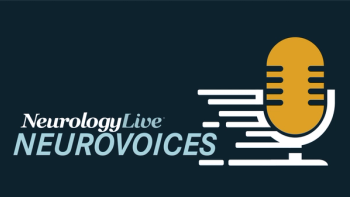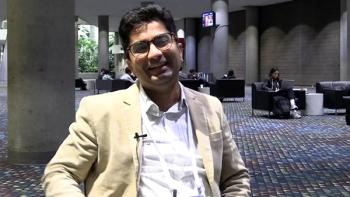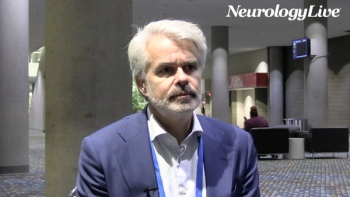
The PICASSO Trial: Defining Best Practices for Tandem Occlusions

Amid World Stroke Day, neurosurgeon Evan Luther, MD, discussed the PICASSO trial’s effort to clarify the role of acute carotid stenting during mechanical thrombectomy for tandem occlusions in ischemic stroke.
While mechanical thrombectomy has transformed acute ischemic stroke (AIS) care over the past decade, several procedural questions remain unanswered—particularly in patients with tandem occlusions, where both the cervical carotid artery and an intracranial vessel are blocked simultaneously. Determining whether acute stenting of the extracranial carotid during thrombectomy offers additional benefit—or introduces unnecessary risk—remains one of the field’s unresolved issues.
The ongoing PICASSO trial (NCT05611242) is taking aim at that question. The multicenter study, led by principal investigator Osama Zaidat, MD, is designed to compare intra-arterial mechanical thrombectomy with acute carotid stenting vs balloon angioplasty alone in patients with tandem occlusions of the anterior circulation. Over a 3-month study period, patients will be tested on the primary outcome of change in modified Rankin Scale ordinal shift, a common outcome measure for stroke studies.
On World Stroke Day 2025, honored annually October 29, NeurologyLive® spoke with Evan Luther, MD, chief of vascular neurosurgery and codirector of endovascular services at the
NeurologyLive: Provide some clinical insight on the relevance and significance of the PICASSO trial.
Evan Luther, MD: The objective of the trial, more than anything, is to evaluate patients with what are called tandem occlusions. This is a relatively rare type of stroke that occurs when someone has both an occlusion of the carotid artery in the neck, their cervical carotid, as well as a large-vessel occlusion intracranially, so a second clot in the brain. As you can imagine, this is relatively difficult to manage. In general, you usually have to get through the occlusion in the neck to then treat the occlusion in the brain.
There has been a lot of debate over many years about whether acutely stenting the carotid is of benefit vs simply ballooning the carotid enough to get your catheters through, performing the intracranial portion of the procedure, and then treating the carotid narrowing later on. So, the trial is really focusing on whether it is beneficial to acutely stent the carotid or to do just an angioplasty and then possibly stent or perform a carotid endarterectomy later. It’s an important question because, clinically, we see these tandem occlusions not infrequently, and there’s still no universally accepted way to manage them.
Talk a little about the trial itself. What are some of the clinical insights into how the study is conducted, who is eligible, and how enrollment works.
The initial investigator was Osama Zaidat, MD, and it is a multi-institutional trial, meaning there are many enrolling centers involved now. The overall goal is to mimic real-life scenarios as closely as possible. In other words, the enrollment criteria for the trial are very similar to what we already use in stroke care and to prior thrombectomy trials. If you have a patient who you think would benefit from thrombectomy and they have a tandem occlusion, then you should consider enrolling them in the PICASSO trial. That is the goal—to reflect the type of decision-making that happens every day in the community.
Once a patient is deemed eligible, they are randomized to 1 of 2 treatment arms. One arm receives balloon angioplasty alone of the cervical carotid, meaning we open the vessel just enough to perform the thrombectomy. The other arm receives acute stenting of the carotid during the initial procedure. So, essentially, we’re comparing acute stenting vs delayed definitive treatment of the carotid.
I think it’s a particularly meaningful and well-designed trial because this is one of the areas of stroke care where we still don’t have a clear answer. Ten or 15 years ago, many people thought mechanical thrombectomy—removing the clot from inside the brain—was not beneficial. But after 2014, that paradigm changed, and we’ve had numerous positive trials showing the clear benefit of thrombectomy for large-vessel occlusions. The question of how to best manage the carotid lesion in tandem occlusions is one of the remaining frontiers in stroke care.
This trial helps address that by bringing together multiple institutions, creating clear-cut criteria for both arms and enrolling real-world patients. The findings should help us make more evidence-based decisions for these patients in the future. I think it’s a strong study design, and I’m grateful to be part of it.
Can you expand on what the literature has shown so far regarding acute stenting vs nonstenting, and what the advantages and disadvantages are to each approach?
That’s a very good question. Most of the literature that we have on this topic is retrospective. In other words, most studies have looked back at groups of patients who were already treated to see whether one approach seemed to produce better outcomes than the other. Because of that, we don’t have level 1 evidence to support one strategy over another, and results have been mixed.
The main advantage of performing balloon angioplasty alone is that you don’t commit the patient to dual antiplatelet therapy immediately after the procedure. When you place an acute stent, that patient has to be loaded on dual antiplatelets and cannot stop them, even if there’s a bleeding event. That can be a significant concern because, even when you successfully reopen the brain vessel, there’s still often an area of infarcted tissue at risk for hemorrhagic transformation. If bleeding occurs and the patient is on dual antiplatelets, you can’t safely stop those medications, and that complicates management.
On the other hand, not stenting comes with its own risks. The main disadvantage of not stenting is that the carotid artery could potentially re-occlude, which can obviously cause recurrent ischemia or limit future blood flow to the brain. Acute stenting provides a more definitive treatment for reopening the carotid, but as I said, it doesn’t come without risk. So the question becomes whether the potential benefit of maintaining carotid patency outweighs the risk of postprocedural hemorrhage due to dual antiplatelet therapy.
The retrospective studies we have so far are split. Some suggest that acute stenting is safe and does not significantly increase the risk of symptomatic hemorrhage, while others show a higher risk of bleeding in the acute setting. There’s been no clear consensus, which is why PICASSO was designed—to finally give us prospective, randomized data on this question. It’s one of those gray areas in stroke intervention that has persisted for years, and hopefully, this trial will help clarify what is safest and most effective for our patients in the long run.
Newsletter
Keep your finger on the pulse of neurology—subscribe to NeurologyLive for expert interviews, new data, and breakthrough treatment updates.































